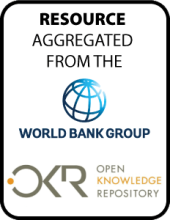Land Library Search
Through our robust search engine, you can search for any item of the over 73,000 highly curated resources in the Land Library.
If you would like to find an overview of what is possible, feel free to peruse the Search Guide.
/ library resources
Showing items 1 through 9 of 32.Studies of urbanization effects in Chinese cities from the aspect of the coupled development of economy and environment are rare due to data limitations.
The role of vegetation analysis by remote sensing (RS) and Geographical Information System (GIS) technology to support plans for sustainable development is discussed through a proposal of an index of ecosystem “integrity” or of regeneration capacity.
By focusing on Guangzhou, this paper examines how different concepts of city in terms of urban-rural relationships are shaped in transforming China since 1949, and explores how they influence the way in which urban planning are practiced.
This study analyzes land use dynamics, land fragmentation, variation of ecosystem service value (ESV), and the underlying driving forces in the context of rapid urbanization in Taizhou city, China.
Global land use structure is changing rapidly due to unceasing population growth and accelerated urbanization, which leads to fierce competition between the rigid demand for built-up area and the protection of cultivated land, forest, and grassland.
Delivering on results is a key to
achieving our Latin America and Caribbean strategy. This
publication presents some of the recent results achieved by
the World Bank Group, our clients, and our partners in the
This country program evaluation (CPE)
evaluates World Bank Group (International Bank for
Reconstruction and Development (IBRD), or the Bank,
International Finance Corporation (IFC), and Multilateral
Uttar Pradesh (UP) is one of the most
densely populated states in India with high rates of
poverty. The state is a major contributor to the
agricultural staples of the country and, at present, a large
This paper develops a dynamic model that
explains the pattern of population and production allocation
in an economy with an urban location and a rural one.
Agglomeration economies make urban dwellers benefit from a


